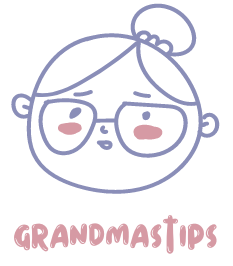Who hasn’t suffered from a headache at some point? For many, it is only a temporary discomfort. Often, pain can be relieved easily with home remedies . But sometimes, headaches are also a sign of an illness, benign or serious! So, when should you worry about a headache? And how do you recognize all the different types of headaches and their meanings? Here are the 5 different types of headaches, and above all, the best remedies to treat them. Look : Summary What are the 5 different types of headaches? Here are the 5 types of headaches : 1. Tension headache 2. Headache due to sinusitis 3. Migraine 4. Cluster headache (or cluster headache, AVF) 5. Hangover 1. TENSION HEADACHE – Sensation of pressure (“headphone” or “headband” effect) – Sensation of tension – Diffuse and moderate pain A tension headache is simply a common headache . You know, the one that everyone has suffered at least once in our lives! Symptoms The pain of tension headaches is diffuse and moderate . Sometimes it is also pulsatile (i.e. in rhythm with the heartbeat). Typically, these headaches also cause a feeling of pressure around the forehead. It is often called “helmet” pain. To describe this pain, many people say it’s a bit like wearing a bandage that’s too tight. Most often, the pain increases in intensity from morning to evening. Do you like this trick ? Receive the best ones every morning. It’s free. No spam, promised, sworn, spit! Join us ! >> Already 3 million readers! The causes The main trigger for tension headaches? It’s stress ! Other causes that can cause them are: – tiredness, – psychological tension, – poor posture and – prolonged poor head position. Often, tension headaches are also associated with head or neck injuries. In very rare cases, the pain can become chronic. How to treat a tension headache? To get rid of a tension headache, simply take a Doliprane or other suitable painkiller . For those who don’t know: Analgesics (also called analgesics) are medications that reduce the sensation of pain. The most common ones are available without a prescription, for example: aspirin, paracetamol and ibuprofen. But be careful: use these treatments only occasionally. If your headaches are frequent and last a long time, consult your doctor without delay. And know that doing sports and stretching helps! In fact, practicing physical activity helps eliminate tension in the shoulders and neck. Otherwise, here are 11 tested and approved natural tips to stop a headache. 2. SINUSITIS HEADACHE – Pain, feeling of pressure, heavy head – Nasal irritation, congestion – Fatigue Some headaches are a symptom of sinusitis: inflammation of the sinuses . Often they are accompanied by fever, facial swelling, and tension around the forehead and cheeks. Symptoms With these headaches, you feel strong pressure and pain around your eyes and forehead. Typically, the pain becomes more intense when you move your head too quickly, or if you lean forward. You may also have a blocked nose, with possible runny nose, and a feeling of fatigue. The causes As their name suggests, they are caused by sinusitis. In fact, some people call them “sinus headaches.” Often, they appear following a cold or a seasonal allergy. How to treat sinusitis headaches? This type of headache rarely goes away on its own. If you suffer from an allergy, antihistamines will surely help you. In other cases, it is better to consult your doctor, who will most likely prescribe antibiotics . And know this: as long as you don’t treat your sinusitis, headaches can persist, or even become permanent! You will have understood: if you have sinusitis, it is better to have it treated as quickly as possible. For example, here is a 100% natural and very effective remedy based on magnesium chloride. 3. MIGRAINE ATTACK Migraine is a chronic illness, with very diverse symptoms. It is characterized by headaches of moderate to severe intensity . The 4 phases of a migraine attack Here are the symptoms that can appear during the 4 phases of a migraine attack: 1. Prodrome (duration up to 48 hours): irritability, fatigue, decreased or increased appetite. 2. Aura (duration up to 30 min): – visual disturbances (bright spots, colored spots, blurred vision or loss of part of the field of vision, etc.) This is then called an ” ophthalmic migraine “. – sensory disturbances (tingling of fingers or lips) – language disorders (difficulty finding the right word, feeling of lack of words) – balance problems or dizziness 3. Headache (duration up to 72 hours): intense, throbbing pain 4. Resolution (duration up to 24 hours): fatigue, concentration problems The causes The causes of migraine are poorly understood. But researchers think it could be a disorder of neurovascular origin . A family predisposition to migraine has long been suspected. How to treat a migraine? Are you looking for a miracle cure to get rid of migraines? Unfortunately, there isn’t one yet… However, there are many treatments to relieve each of its symptoms. If you suffer from migraine attacks, consult your doctor to choose the appropriate treatment.

